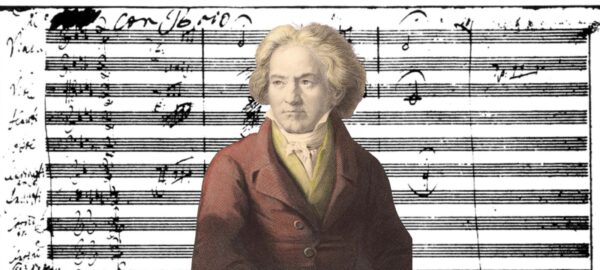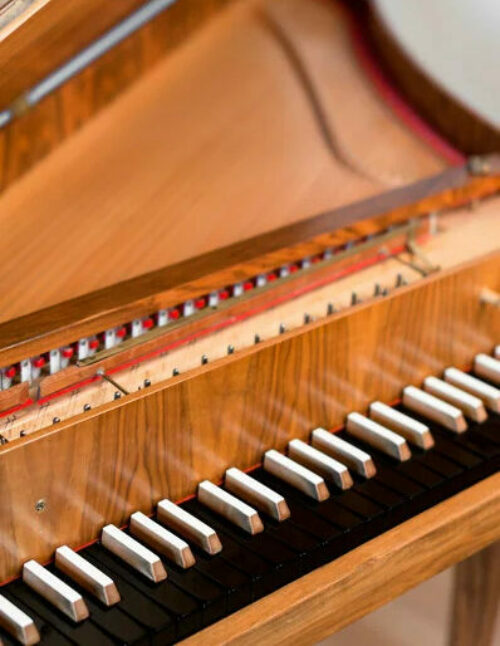
We're performing these three Beethoven pieces in 2026
December 10, 2025
Beethoven's legendary composing takes center stage in the Omaha Symphony's 2025/26 Season!Tuesday, August 9
Blog series highlighting musical terms that you might hear at the Omaha Symphony
Live classical music has a rich and bold history that stretches back thousands of years. It does not have a concrete starting point at any one time or place and everything that you hear on the stage today is part of a larger system that continues to evolve and change. What you might call “classical music” is a lot more than one type of genre and encompasses a greater historical context and depth. For this reason, we created a blog centered around some of the terminology that you might hear when you come to orchestra concerts!
What do these terms mean? What’s their greater historical context? Why do we use them? And how do they relate to today’s musical experience? Read on to find out.

Concerto (pronounced: con-chair-toe): Simply put, a concerto is a musical composition featuring a soloist or multiple soloists accompanied by the orchestra. Sometimes, a soloist can also be accompanied by a smaller group of players called a chamber group.
The word concerto comes from the Italian word meaning concert.
Concerti: Plural form or “multiple concertos.”
Origins of the Concerto: The earliest piece of music in which the word “concerto” was indicated was in a work by an Italian composer Giovanni Gabrieli published in 1587. Moving forward, between roughly 1600-1750 (this is called the Baroque era in classical speak), composers fell in love with this trend and started using it to write their pieces. One of the earliest forms of concerti was the Concerto Grosso in which the musical material is passed between a small group of soloists and full orchestra. Another early iteration of the concerto was one in which a vocalist would solo in front of the orchestra instead of an instrumentalist. A lot of this has to do with how instruments developed over time.
One concerto that is commonly heard today is the piano concerto. So many composers have written and continue to write works for solo piano and orchestra. However, this wasn’t always the case. The piano as we know it today is loud, percussive, resonant, and full but what if I told you that the piano used to be a quiet, small, and gentle instrument? The harpsichord, clavichord, and spinet were some of the ancestors of the modern-day piano and they had strings inside that were plucked instead of struck with a hammer like today – making them soft in volume.

For these reasons, many early concerti for instrumentalists were composed for strings and winds! Composers such as Antonio Vivaldi, JS Bach, Georg Philipp Telemann, and George Frideric Handel (all composers of the Baroque era) took advantage of this popular style, and many instrumentalists are lucky to say that they have pieces written specifically for their instruments from this time period.
Later, composers of the Classical era (roughly 1730-1820) such as Wolfgang Amadeus Mozart, Ludwig van Beethoven, and Carl Philippe Emanuel Bach (JS Bach’s son) continued the tradition but altered the concerti to make them flashier. Soloists would get to show off more of their technical abilities on the instrument. Up to this point, the concerto was a call and response between soloist and orchestra and although the soloist would sometimes be on the hook for adding flashy embellishments or learning difficult passages, the concerto’s main purpose was not to show off the soloist – until the Classical and Romantic eras of music.
The transformation of the concerto: By the Romantic era (roughly 1830-1900) concerti became more akin to show pieces. This is due in most part to the improvements made in acoustic instruments. Instrument makers all over the world were actively trying to create instruments that were more comfortable, more resonant, more in tune, and of course…louder. And finally, we arrive at the piano that we know and love as well as acquire huge improvements in wind and percussion instruments. This created the perfect storm in which concerti began to feature faster passages, louder volumes, and technical challenges which all required immense preparation and mastery from the performer – and made the concerto A LOT more exciting for the audience!
Today, concerti are still composed and performed regularly. They are often asked for in auditions, performed at competitions, and heard on every season of every major symphony orchestra all over the world. The concerto is truly a staple and for good reason – not only does it provide the artists with a chance to show off their immense skill, but it gives audiences a chance to become acquainted with the soloist or instrument in a new and exciting way and creates an opportunity for a composer to immerse themselves in all aspects of the instrument(s) that they’re writing for.
Edward Elgar - Cello Concerto (20th century)
Soloist: Gabriel Martins
*This concerto features THREE soloists all at once! *
Ludwig van Beethoven – Triple Concerto (Romantic era)
Soloists:
Ahra Cho: Associate Concertmaster
Paul Ledwon: Principal Cello
Christi Zuniga: Principal Keyboard
Jessie Montgomery – Rounds for Piano and String Orchestra (21st century)
*This concerto features only the strings in the orchestra*
Soloist: Awadagin Pratt
Launy Grøndahl – Trombone Concerto (20th century)
Soloist: Jason Stromquist
Beethoven 2 & Hummel’s Trumpet Concerto
Johann Nepomuk Hummel – Trumpet Concerto (Classical/Romantic era)
Soloist: Scott Quackenbush, Principal Trumpet
Antonio Vivaldi - Concerto for Strings in G Major, RV 151 “Alla rustica” (Baroque era)
Mark Adamo - Last Year for Cello & Orchestra (21st century)
Ernest Bloch - Concerto Grosso #1 for Strings and Piano Obbligato (20th century)
Soloist: Samuel Pierce-Ruhland, Assistant Principal Cello
William Walton – Violin Concerto (20th century)
Soloist: Susanna Perry Gilmore
Concerto TBD
Soloist: Jack Rago, Principal Timpani
Bernstein, Ravel, and Tchaikovsky
Maurice Ravel – Piano Concerto in G Major
Soloist: Wei Luo
Jennifer Higdon – Viola Concerto
Soloist: Thomas Kluge
Johannes Brahms – Violin Concerto
Soloist: Stella Chen
Love the Omaha Symphony?
Be the first to learn about new concerts, stories, and special offers.